To mark our 50th year, we’ll be celebrating 50 key moments that made the AFL Players’ Association.
Each week, we’ll be looking back on a moment that defined the AFLPA’s history.
1973 – The formation of the VFLPA
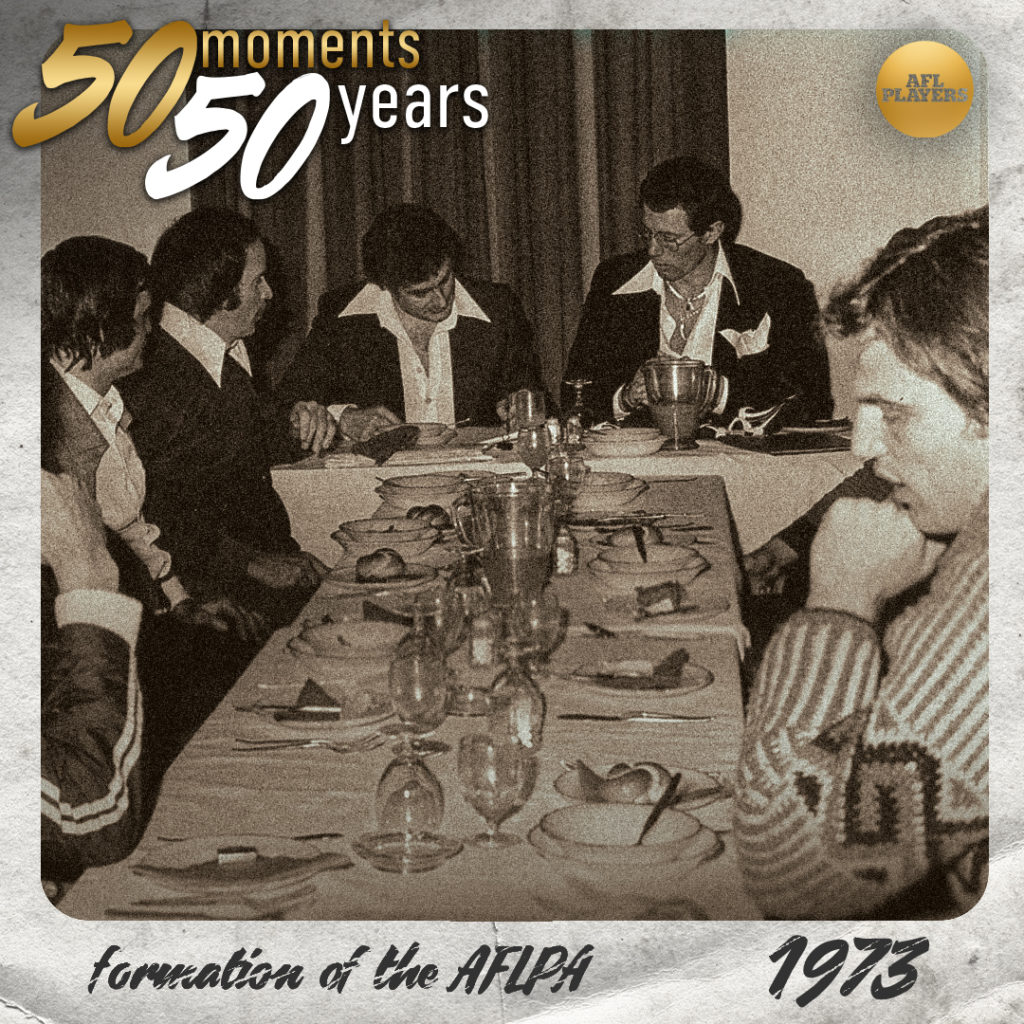
After a series of meetings that spanned several months, December 10th 1973 saw the very first general meeting.
The Herald Sun reported the next day that the VFL Players’ Association had been formed, with Essendon’s Geoff Pryor at its head.
1974 – The footballer magazine
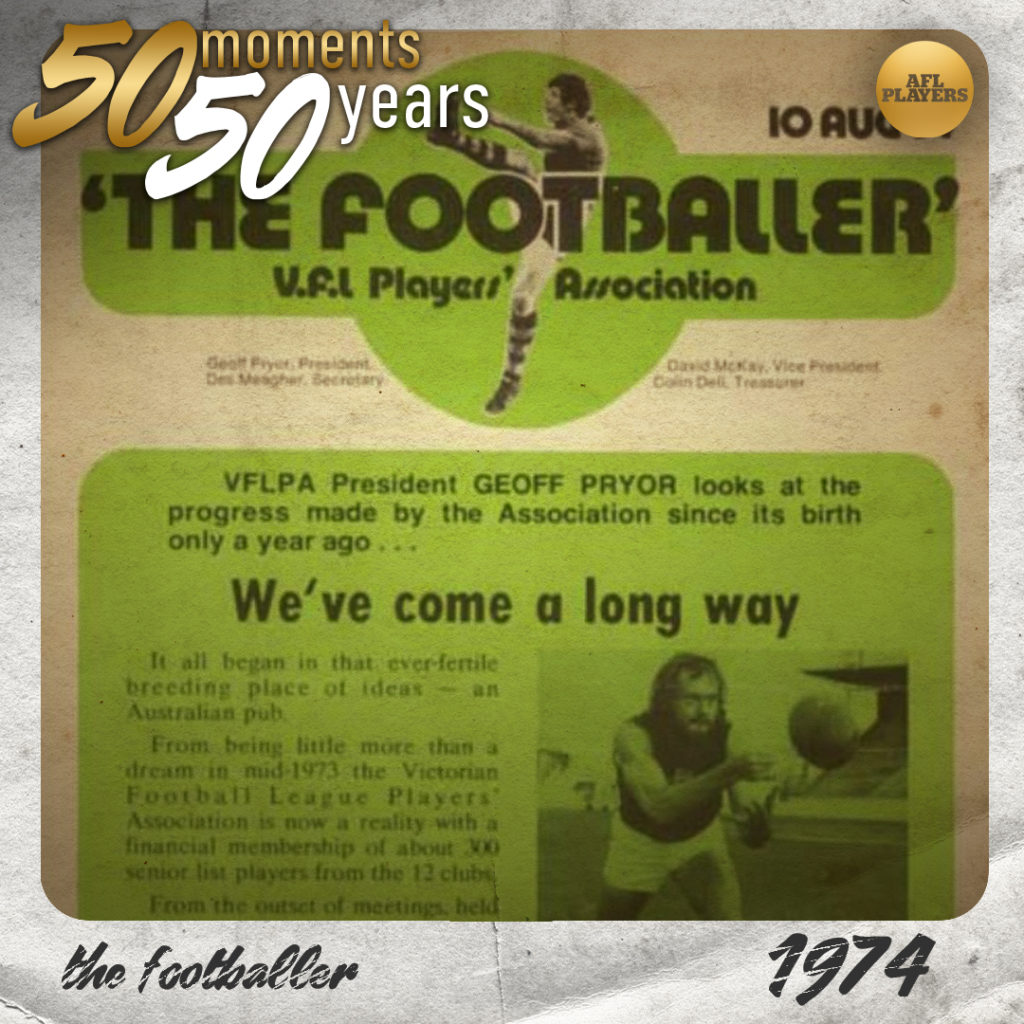
To help establish the VFLPA’s identity, The Footballer magazine was introduced.
The magazine’s purpose was to communicate the VFLPA’s stance on industry and workplace issues, eventually growing into a 36-page magazine featuring updates written by Geoff Pryor, David McKay, and other members.
The main story of the first edition was entitled ‘We’ve come a long way’ by Geoff Pryor who wrote: “It all began in that ever-fertile breeding place of ideas – an Australian pub.”
1975 – Supporting Neil Sachse

After winning a premiership with North Adelaide in the SANFL, Neil Sachse was playing only his second VFL game for Footscray when he collided with Fitzroy’s Kevin O’Keeffe, resulting in a devastating spinal chord injury that left Sachse quadraplegic.
At the next delegates meeting, the VFLPA agreed to open a trust account for Neil Sachse, with all footballers being asked to pay a voluntary levy to the fund.
The motion was passed unanimously.
1976 – Bob Hawke speaks at the AGM
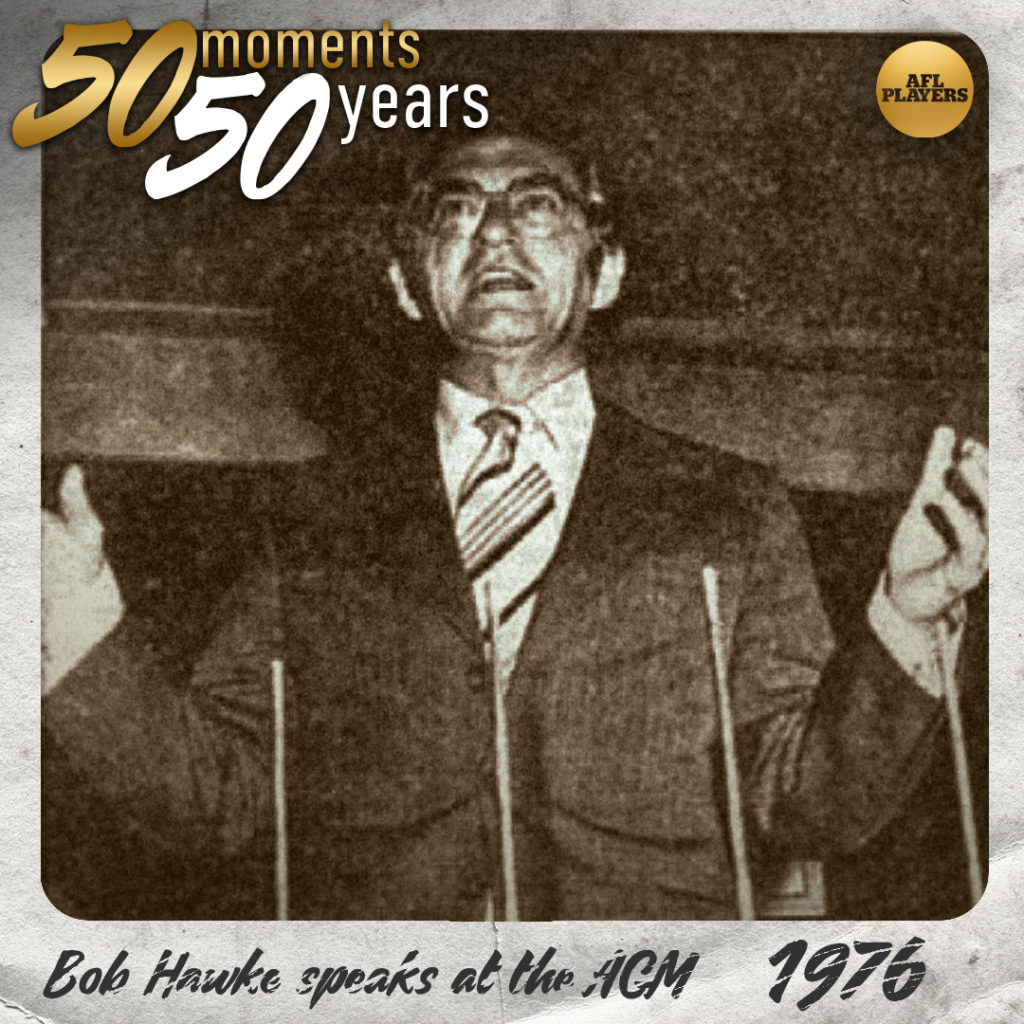
In March 1976, soon-to-be Australian Prime Minister Bob Hawke addressed the players at the AGM of the VFLPA.
The Sun reported that Bob Hawke put his beer next to the lectern and rallied the troops saying, “I don’t want to suggest that you become a bunch of wild firebrands or radicals. But, I would like my affiliated unions to have the power you fellows have. You have an enormous amount of power… it’s incredible.”
1977 – Most Courageous
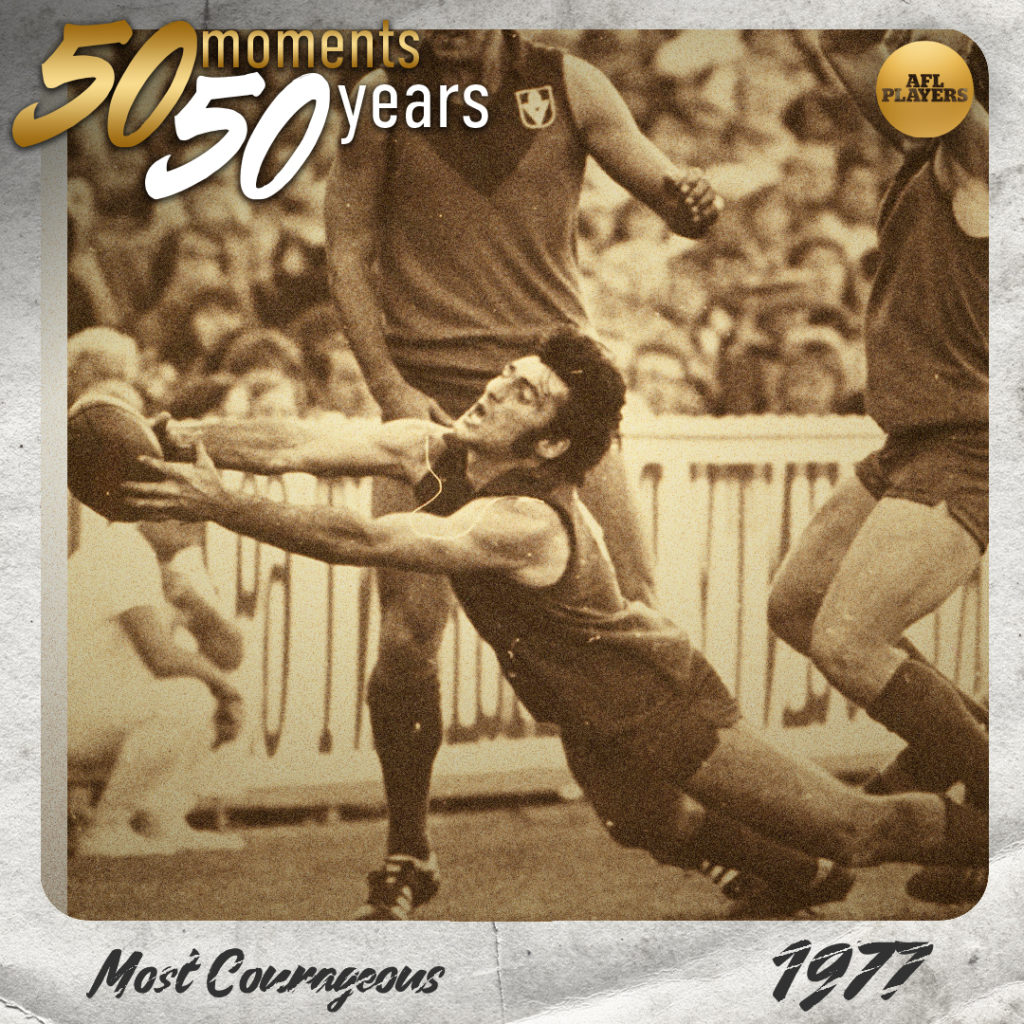
The very first Most Courageous Award can be traced back to 1977, when the Melbourne Herald announced a $1,000 award for the league’s most courageous player.
Unlike the Herald’s other prizes, the most courageous award was voted on by the players through the VFLPA. The players nominated monthly, before voting for the final winner at the end of the season.
Melbourne’s Laurie Fowler (pictured) was the first nominee, while Fitzroy’s Gary Wilson took home the inaugural award.
The Players’ Association later adopted the Most Courageous Player Award in 1991 when it was officially recognised at the annual MVP Awards.
1978 – Adidas meets with the VFLPA
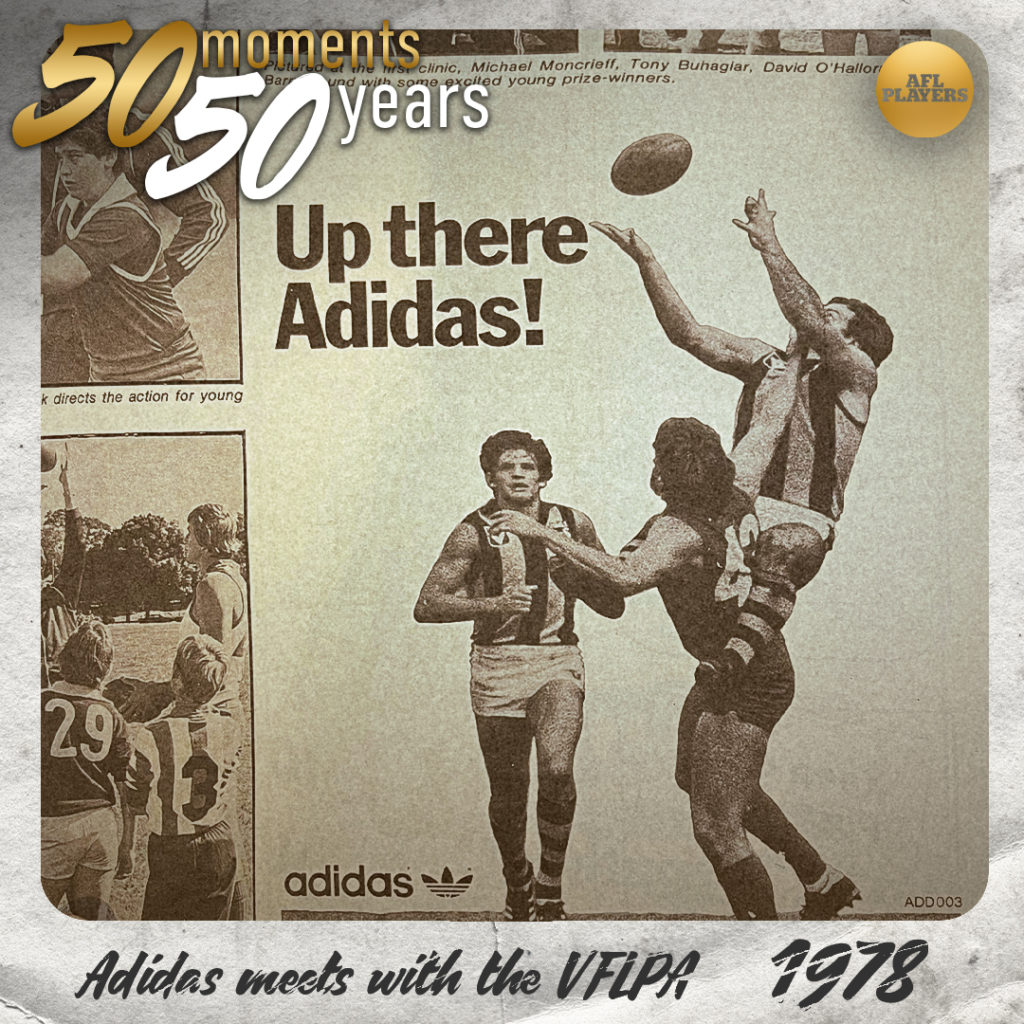
In 1978, the VFLPA ruled that football boots should be considered “tools of the trade”, allowing players’ to wear whatever type of gear they wanted.
Up until this point, all VFL players were required to wear Adidas boots due to each club’s sponsorship deal with the brand.
This decision also gave players the freedom to obtain their own apparel partners and sponsorships individually.
Needless to say, Adidas swiftly requested a meeting with the VFLPA to discuss the decision.
1979 – Sunday Football
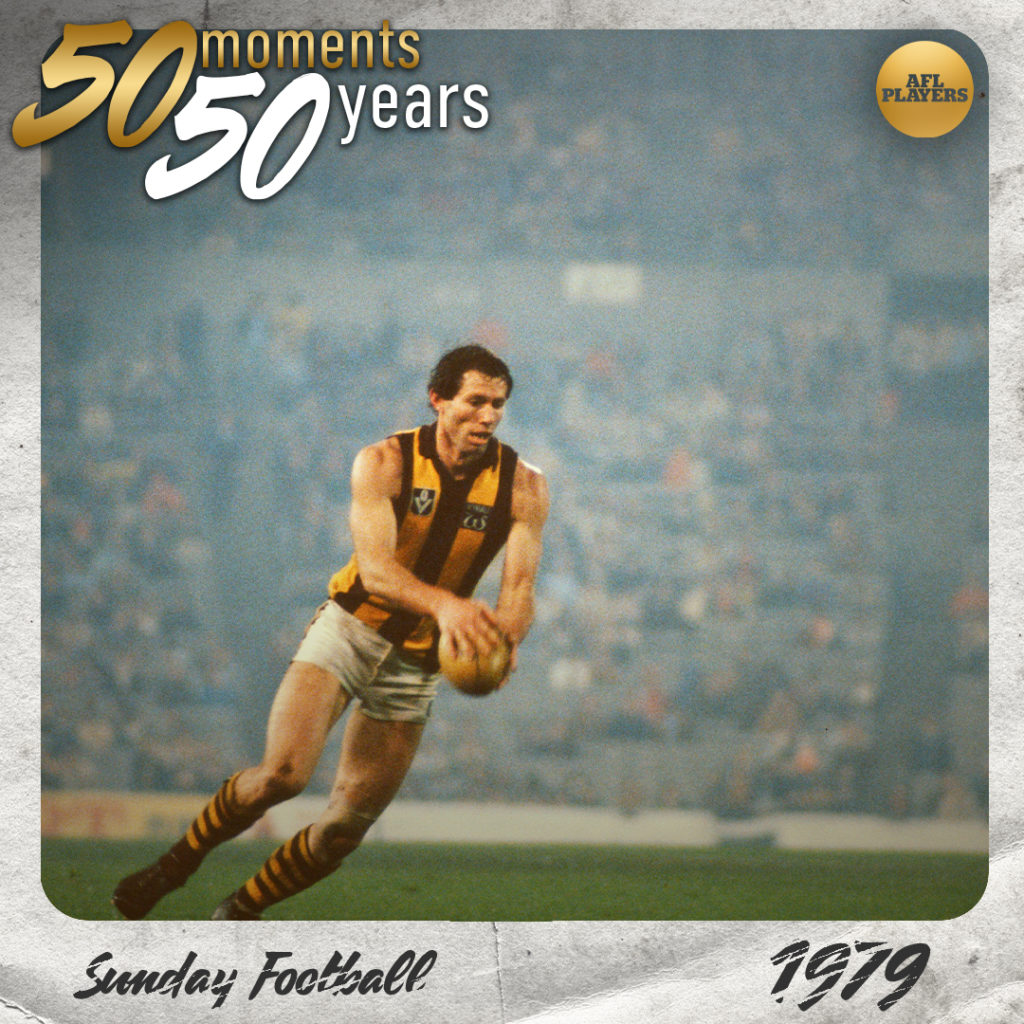
At the May 1979 VFLPA meeting, the delegates discussed the matter of Sunday Football for almost two hours. Although the consensus was that the players opposed Sunday games due to the infringement of the VFA and church competitions, they understood that refusing would alienate themselves from the public.
Eventually, the VFLPA agreed to play one game per club, per year on a Sunday and, as a means of promoting the code of Australian football, the game would be held interstate in NSW.
To this day, Sunday Football has become a staple of the AFL and AFLW competitions.
1980 – “Faceless Men”
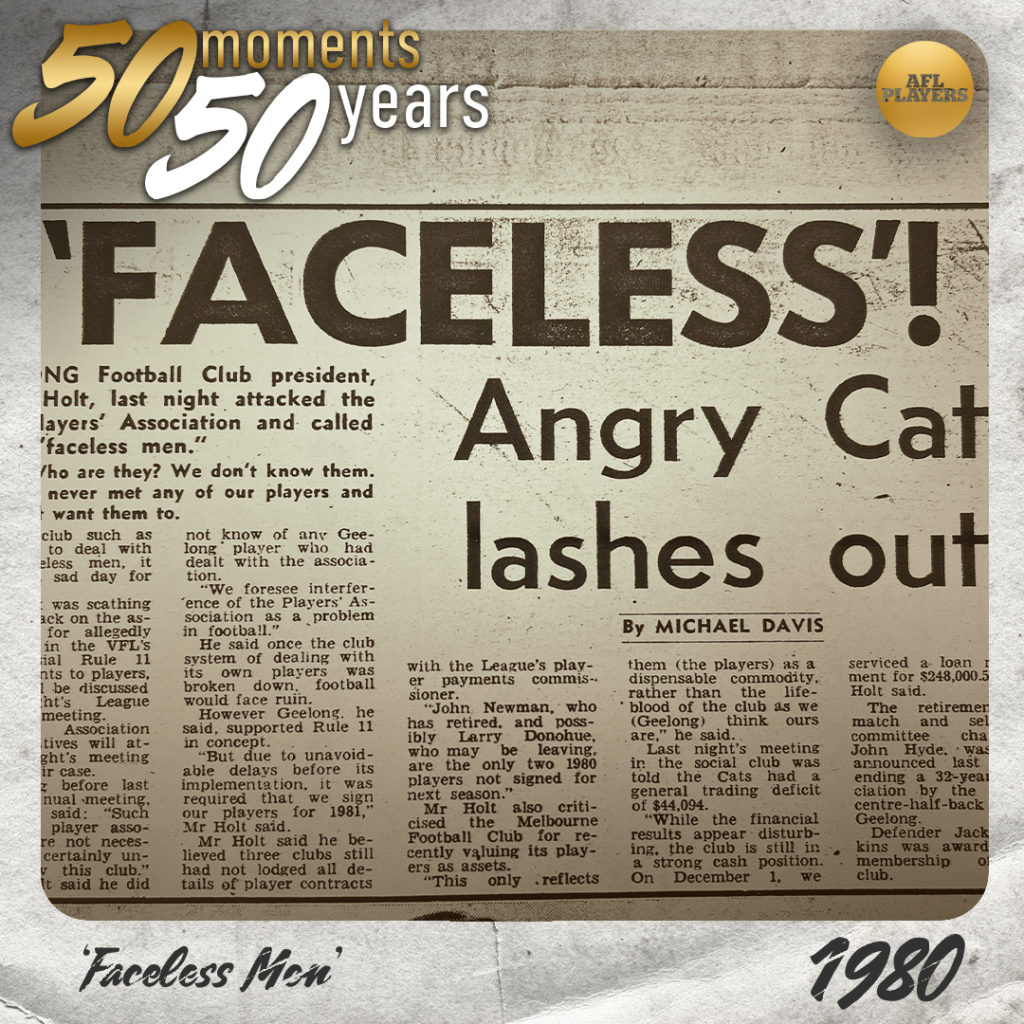
How times have changed!
In 1980, then-Geelong Football Club president John Holt launched an attack on the VFLPA, labelling them “faceless men”.
Holt stated, “Who are they? We don’t know them. They’ve never met any of our players and we don’t want them to.”
The outburst came after Holt’s scathing view of the VFLPA’s alleged “meddling” in the VFL’s controversial Rule 11, which related to player payments. Holt went on to say that he foresaw interference of the VFLPA as a “problem in football”.
Suffice to say, Geelong’s relationship with the PA has drastically improved.
1981 – Threatening Strike Action
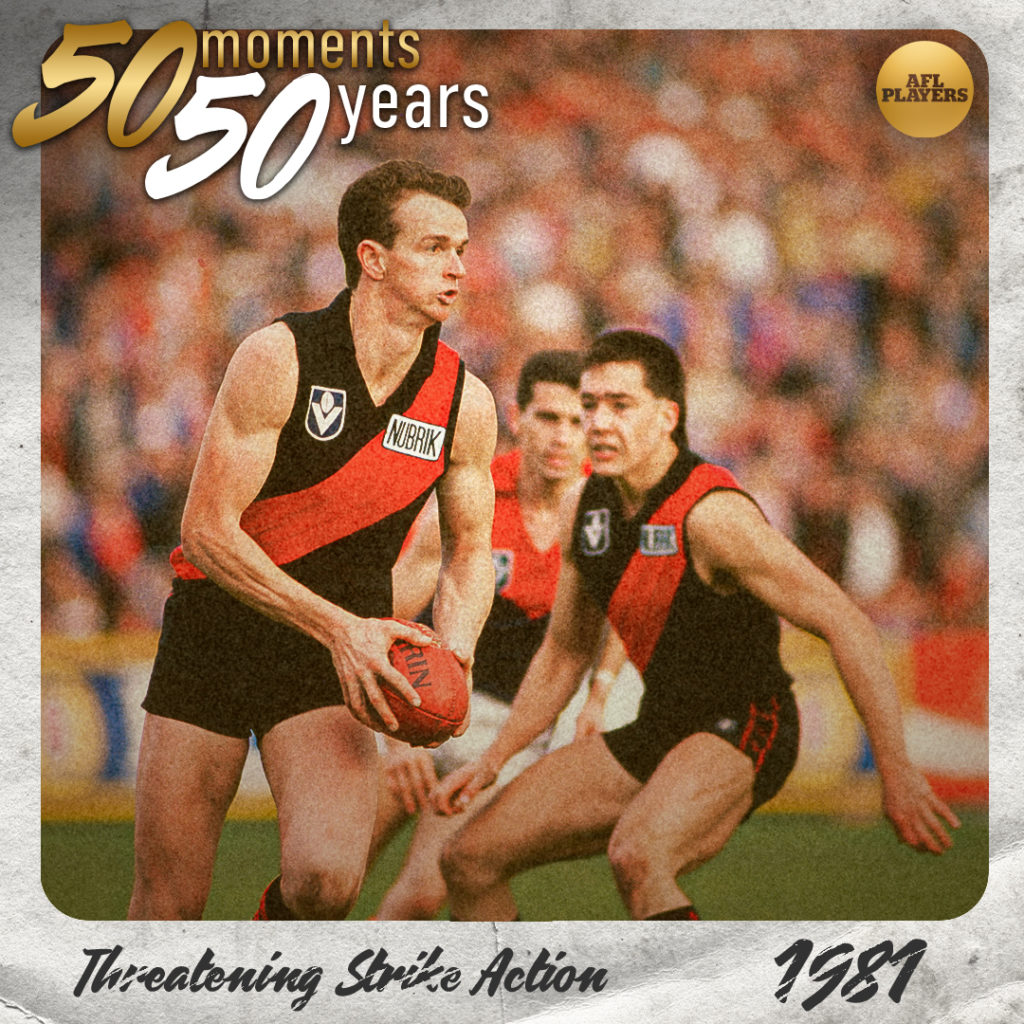
1981 marked a significant turning point in the history of the PA, with players threatening to boycott the Escort Cup night series match.
The strike threat was a result of the VFL wanting to withdraw official recognition of the VFLPA as they negotiated playing contracts.
It wasn’t until two days before the 1981 season started that the issue was resolved.
1982 – Most Valuable Player Award

Legendary Hawthorn player Leigh Matthews took home the very first Most Valuable Player Award in 1982.
The annual award was the first of its kind in AFL, with the winner voted by the players themselves.
In 2001, the playing group decided to pay homage to the inaugural winner and rename the award after Matthews.
1983 – Anyone for tennis?
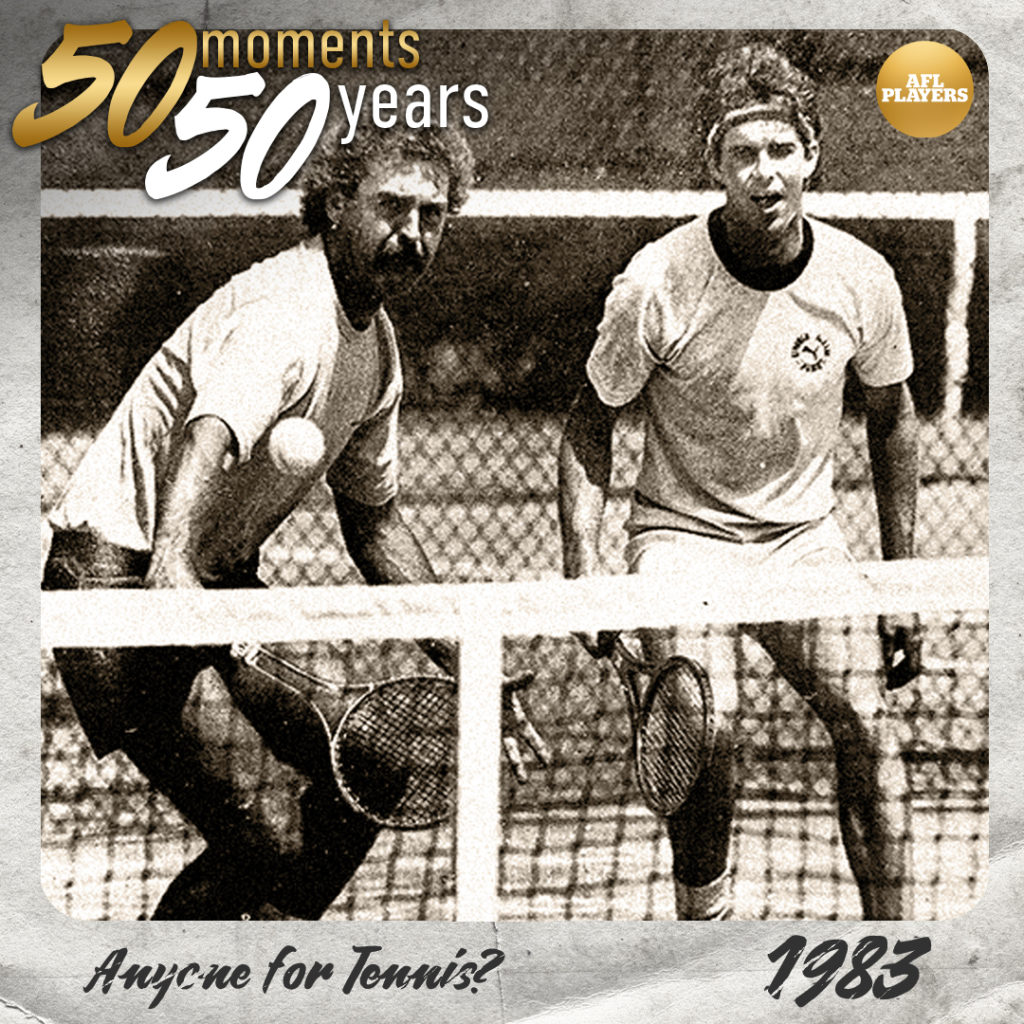
The inaugural VFLPA v Media tennis challenge was held on March 1st, 1983.
The match took place at Leggetts in Prahran and saw the Media team narrowly clinching victory over the players.
Pictured above are two of the media “hot shots”: Sun photographer Peter Cox and journalist Mark Hooper from The Australian.
1984 – Sunday with the Stars

In collaboration with local organisations, the players teamed up to run a series of free junior footy clinics known as ‘Sunday with the Stars’, aiming to promote the game within communities.
The ‘Stars’ included the likes of Mike Fitzpatrick (pictured), Trevor Barker, Peter Knights, and many more.
The clinics were presented by Samboy, marking the VFLPA’s very first major sponsor.
1985 – Life After Football
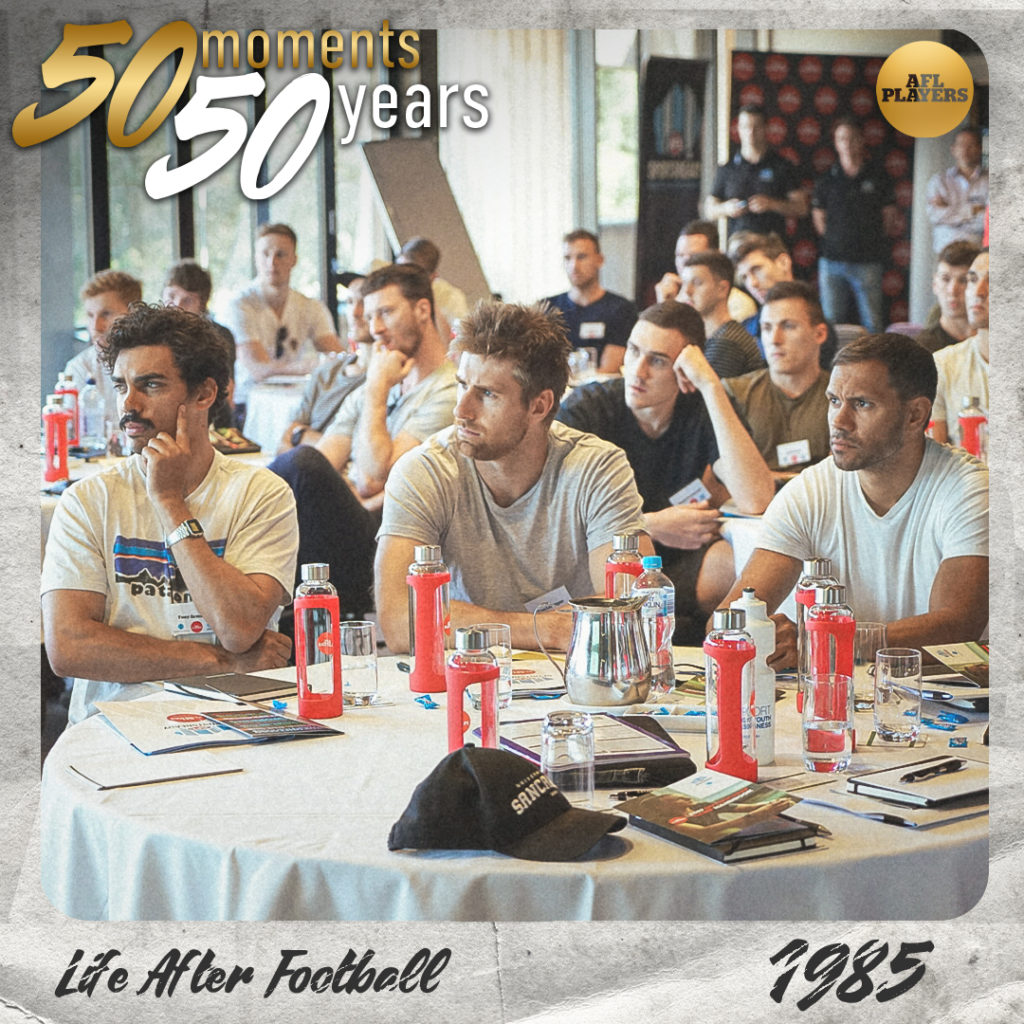
The VFLPA initiated a series of financial planning seminars in an attempt to promote better financial management, particularly among younger players.
The seminars covered a range of topics such as investment and planning, as well as the later introduced fringe benefit tax laws.
The VFLPA saw these seminars as an opportunity to support players in developing management skills and in turn preparing them for “life after football”.
While this series has gone through various iterations since, financial literacy programs are still pivotal to the PA’s modern-day player induction program.
1986 – The Modern Draft
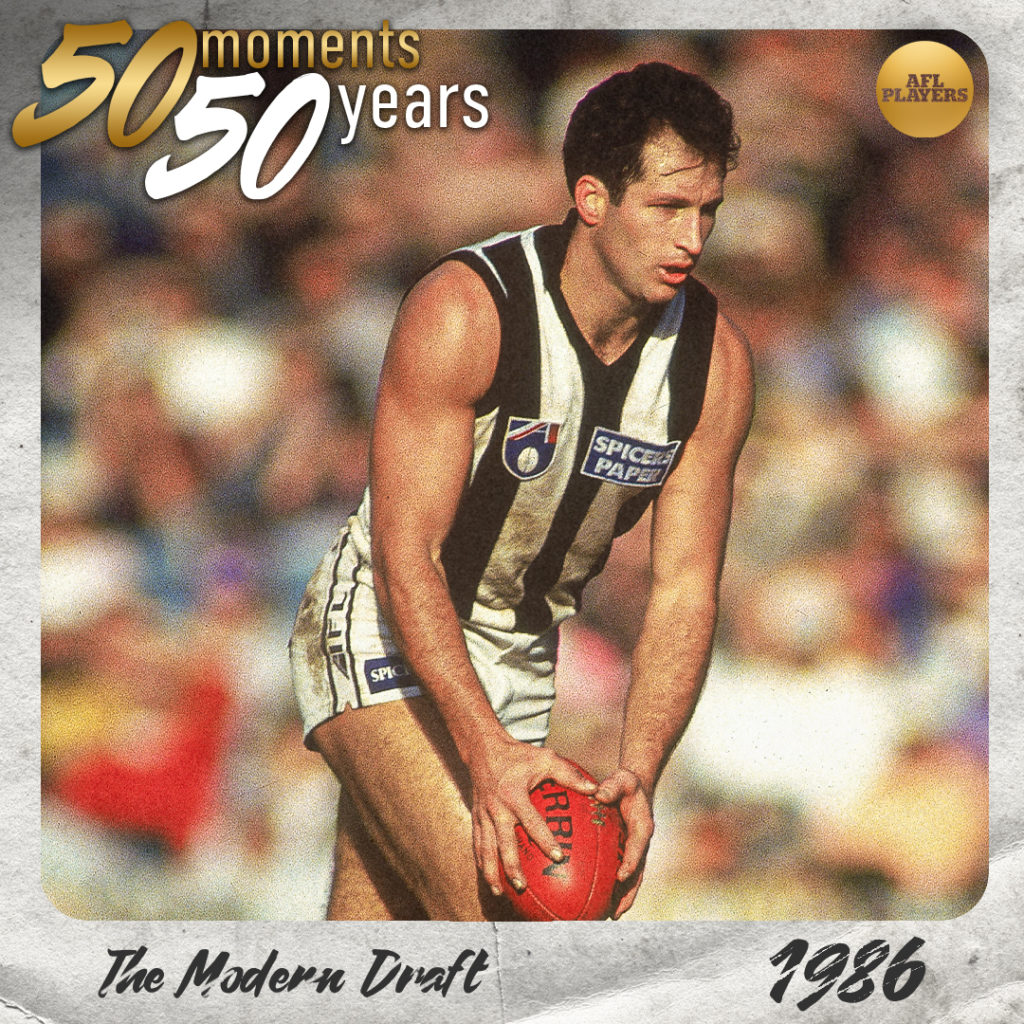
In 1986, the first modern VFL Draft was held.
The debuting West Coast Eagles were excluded from the draft and instead granted exclusive access to 35 Western Australian players from the WAFL.
The other debuting club, the Brisbane Bears, received six concessionary picks and exclusive access to Queensland-based players.
Since then, the rules surrounding the draft – including zoning, the father-son rule, trading, and expansion clubs – have frequently changed, but the basic premise of the draft being an equalisation measure to assist the poorer performed teams has remained.
1987 – The Salary Cap
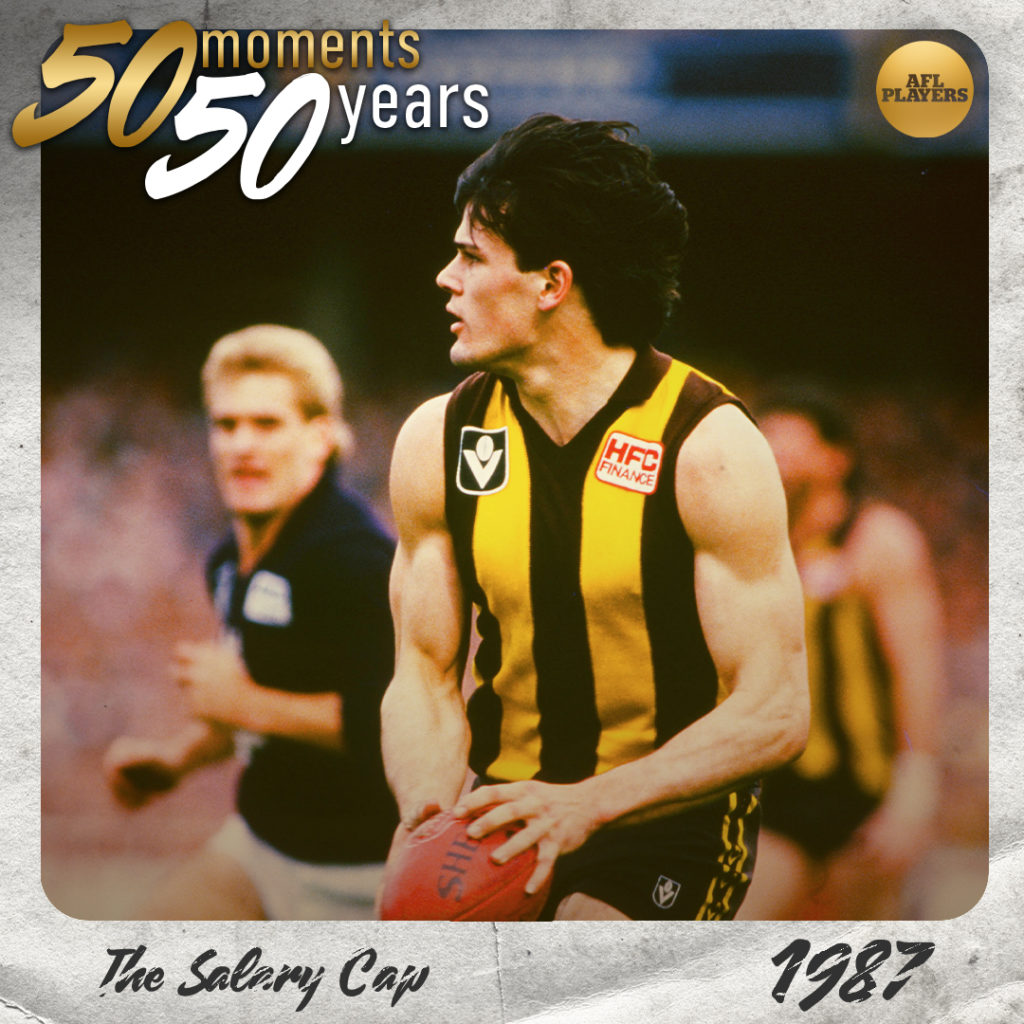
The AFL implemented a salary cap ahead of Brisbane and West Coast joining the league in 1987.
The salary cap, know as the Total Player Payments (TPP), is designed to neutralize the ability of the richest and most successful clubs to dominate the competition and is a key component of CBA negotiations.
1988 – Farewell to lace-ups
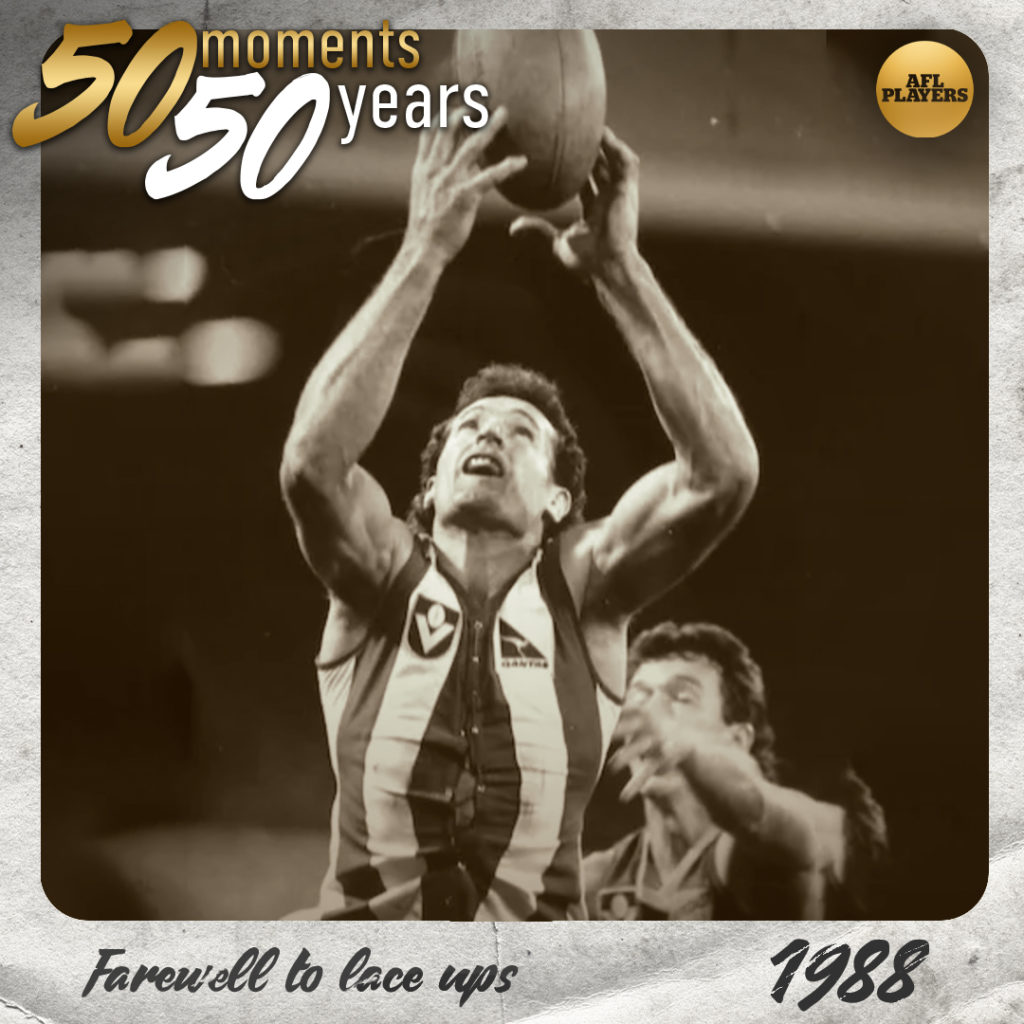
Before 1988, a handful of players wore snug-fitting guernseys that laced up at the front, making it difficult for their opponents to grab onto them.
However, due to multiple instances of players sustaining broken fingers when the laces became entangled during tackles, the VFL decided to outlaw these types of guernseys ahead of the new season.
1989 – Trial by video
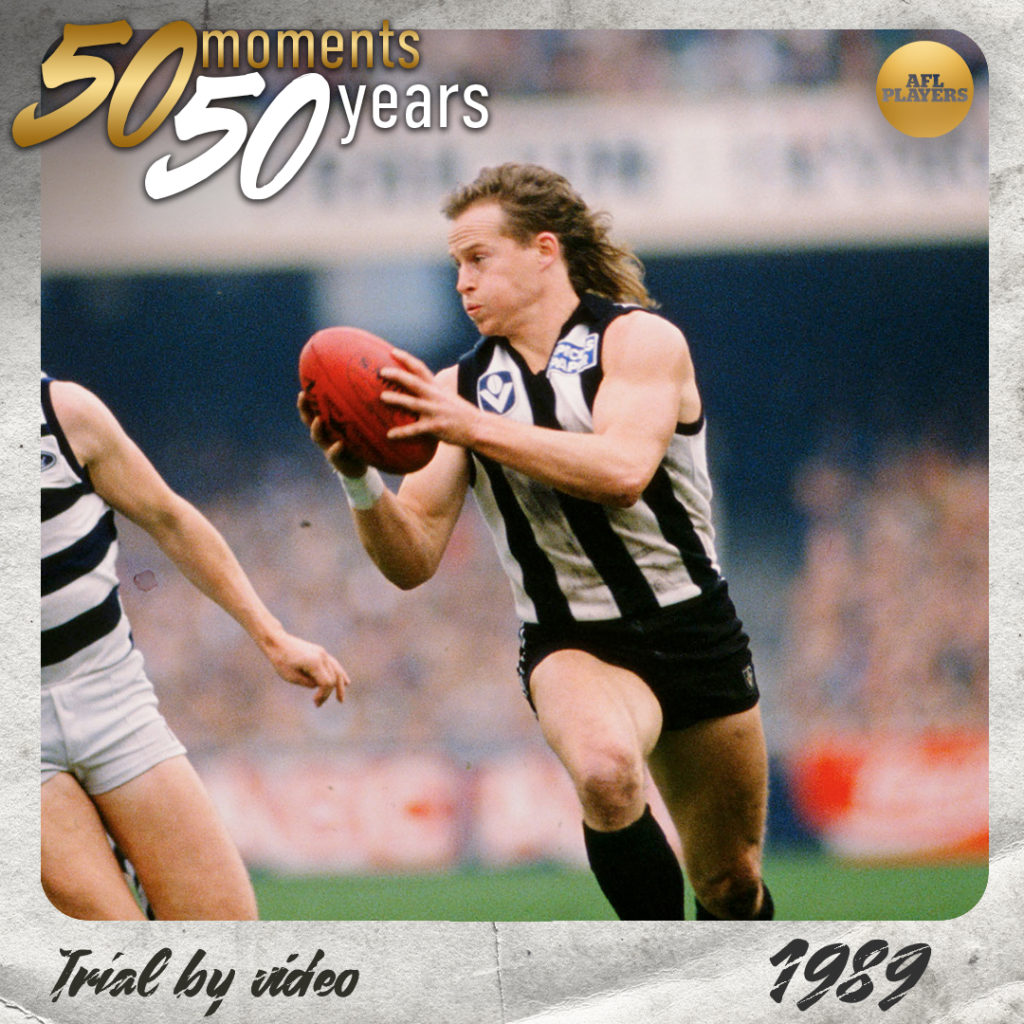
The Tribunal was granted additional powers when trial by video was introduced in Round 6 of the 1989 season.
Collingwood’s Doug Barwick (pictured) and Fitzroy’s Michael Conlan became the first players in the league charged on video evidence and were suspended by the Commission.
